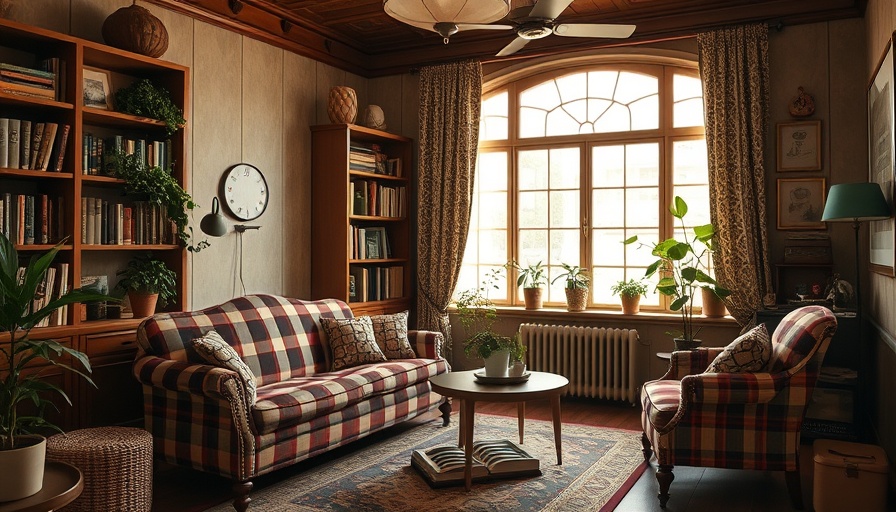
Understanding Vintage Decor: The Allure of Timelessness
In a world awash with mass-produced goods, vintage decor is a breath of fresh air, enriching our homes and lives with warmth and nostalgia. But what exactly defines vintage decor? Many homeowners often find themselves captivated by pieces that tell a story—an intricate side table, a delicate vase, or a unique lamp—but can struggle to categorize them amidst the myriad of terms like 'antique' and 'retro.'
According to experts, vintage decor refers to items that are generally 20 to 99 years old, often characterized by their unique craftsmanship and cultural significance. While antiques are defined as objects that are at least 100 years old, the vibrant stories embedded in vintage pieces breathe life into contemporary spaces. “Vintage pieces reflect the spirit, craftsmanship, and design trends of their era,” says Walter O’Neill, founder of Antiques Arena, emphasizing that vintage isn’t just about age—it's about the stories they carry.
The Difference Between Vintage, Antique, and Retro
Understanding the distinctions between antique, vintage, and retro is essential for anyone interested in home decor. Antiques are typically over 100 years old, embodying a sense of history that adds value and gravitas to a collection. Vintage items, on the other hand, fill the space between 20 to 99 years old, often representing fleeting design trends and styles, whereas retro refers to new items that mimic the aesthetics of these past decades.
This differentiation is key for homeowners seeking to curate an authentic vintage collection. As Lauren Thomann, an antique jewelry appraiser, puts it, “Vintage means 20 years or older, while antique is typically reserved for pieces that are 100 years or older.” Armed with this knowledge, you can bring discernment to your vintage hunting.
The Emotional Connection: Why Vintage Matters
Choosing vintage decor goes beyond aesthetics; it speaks to the heart and soul of our living spaces. Vintage items often come with rich stories and histories that resonate with personal memories—perhaps a vintage chair was once owned by a beloved grandparent or a wall clock reminds someone of past family gatherings. For many homeowners, these pieces evoke immersive nostalgia, creating an emotional connection that mass-produced items simply can't replicate.
The emotional resonance associated with vintage decor can also enhance mental well-being, encouraging mindfulness and appreciation for craftsmanship. Each item sparks conversations, creating rich social interactions that celebrate shared heritage and personal stories.
Tips for Incorporating Vintage Decor into Your Home
1. **Mix and Match**: One of the joys of vintage decor is its eclectic nature. Don't hesitate to mix vintage pieces with modern furnishings for a balanced aesthetic that feels personal and unique.
2. **Focus on Quality**: When seeking vintage pieces, inspecting the craftsmanship is vital. Look for high-quality materials and construction techniques that promise longevity.
3. **Be Open-Minded**: Vintage hunting can be a journey of discovery. Be open to pieces that may not fit the conventional mold but resonate with your sense of style and story.
This holistic approach to vintage decor emphasizes that it is not just about curating a beautiful space but also about the stories and memories that accompany these treasures.
Conclusion: Step into the Vintage Realm
>> Whether you are looking to enhance your home's warmth or simply add character, vintage decor holds the power to transform your living space into a narrative of design and history. As you explore the world of vintage, remember to embrace its charm, allowing your home to reflect your unique journey and style. So, why not start your vintage journey today? Seek out local vintage shops, markets, or even the hidden treasures that await you in your attic and bring home pieces that inspire and tell the stories of your life.
 Add Row
Add Row  Add
Add 




Write A Comment